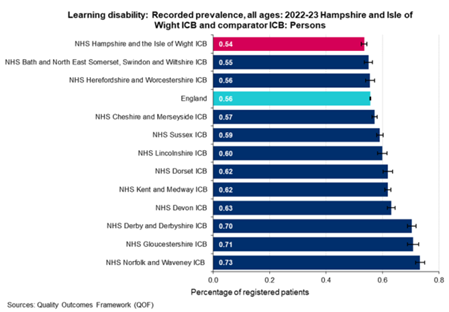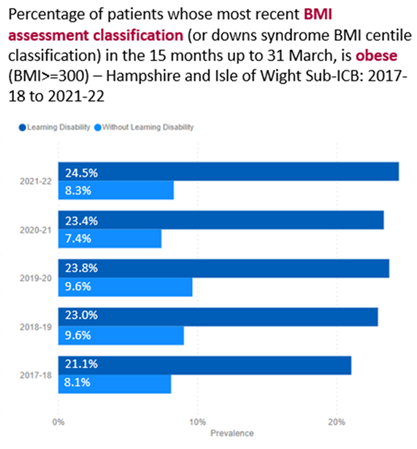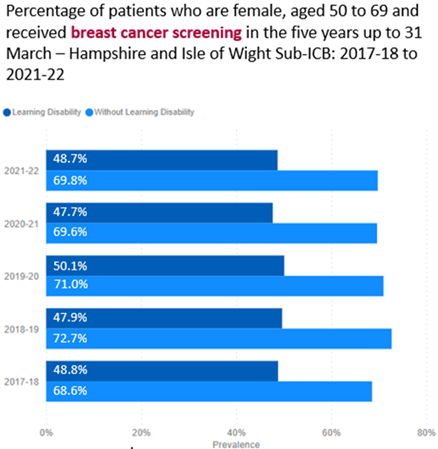
Learning disabilities
Learning disability (LD) definition
A learning disability can be defined as a reduced intellectual ability and difficulty with everyday activities – for example household tasks. People with a learning disability tend to take longer to learn and may need support to develop new skills, understand complicated information and interact with other people. A learning disability, not to be confused with a learning difficulty such as dyslexia and dyspraxia, is a term given to a group of conditions that are present before the age of 18 and can be categorised as mild, moderate, severe or profound. Mencap
 The level of support someone needs depends on the individual. For example, someone with a mild learning disability may only need support with things like getting a job. However, someone with a severe or profound learning disability may need full time care and support with every aspect of their life – they may also have physical disabilities.
The level of support someone needs depends on the individual. For example, someone with a mild learning disability may only need support with things like getting a job. However, someone with a severe or profound learning disability may need full time care and support with every aspect of their life – they may also have physical disabilities.
People with certain specific conditions can have a learning disability too. For example, some people with autism or with Down’s syndrome have a learning disability.
Improving the lives of adults with learning disabilities has become a national priority as people with learning disabilities have worse health than the general population. Public Health England identifies
the primary reasons for this are:
- There is an increased risk of specific health problems and/or personal health risks or health behaviours
- Greater exposure to social determinants of poorer health
- Barriers to healthcare provision such as access, communication difficulties including reduced health literacy
More information on learning disabilities available in the slide set below and in the resources section.
Prevalence and population profile
There is a gap between the number of people who are estimated to have a learning disability and those who are registered with a GP.
In the Hampshire and Isle of Wight Sub-ICB, approximately 25 people in 1,000 are estimated to have a learning disability, but only 5 in 1,000 people are registered with a GP as having a learning disability.
In 2022-23 it is estimated that 25,359 residents, aged 18+ have a learning disability, in Hampshire, Southampton and the Isle of Wight. Of which 10,400 are registered with a GP (0.54% of registered patients). The lowest of our ICB comparators and lower than the England prevalence of 0.56%.
Across Southampton PCNs, 1,583 GP registered patients were registered as having a learning disability, a prevalence of 0.49% for 2022/23. The prevalence ranged by practice from 0.02% of patients at University Health Service to 0.94% at Lordshill Health Centre. The next highest prevalence were at Stoneham Lane Surgery and Shirley Health Partnership, both with a prevalence of 0.71%.
In Southampton the key characteristics of people with learning disabilities are:
- More males, than females have a learning disability
- A higher percentage of residents who have a learning disability live in Coxford, Redbridge and Thornhill
- Prevalence in the most deprived areas of Southampton is four times higher than in the least deprived areas (6.72 per 1,000 population in the 20% most deprived areas compared to 2.61 per 1,000 population in the least deprived areas).
NHS Digital have produced a Health and Care of People with Learning Disabilities dashboard which contains information on people with a learning disability or autism and those without, to identify potential differences in treatment, health status and outcomes. The dashboard has been produced at Sub Integrated Care board (Sub-ICB) level. The Hampshire and Isle of Wight (H&IoW) Sub-ICB (D9Y0V) covers Hampshire, the Isle of Wight, Portsmouth and Southampton and the Health and Care of People with Learning Disabilities dashboard covers 69.1% of registered patients in the Sub-ICB. For more information on sub-ICB areas see the glossary of terms page.
In 2021-22, data for the Hampshire and Isle of Wight Sub-ICB shows that the prevalence for males with a learning disability is highest in the age group of 18-24 years at 1.24% and 1.02% for males in the age group 25 to 34 years, compared with 0.64% and 0.53% for females in the same periods.
More detail is available in the Health and Care of People with Learning Disabilities dashboard and in the slide set available in the resources section.
Predicted forecasts
Information from a range of sources consistently reports that people with learning disabilities in England die much younger than the general population. As with the general population, the median age of death for people with learning disabilities is increasing. The faster improvement in male mortality is largely driven by changes seen in tobacco smoking and advances in health treatments for circulatory illnesses. (East Sussex JSNA)
Projecting Older People Population Information System (POPPI) predict in Southampton, adults (18+) with learning disabilities will increase by 26.9% from 740 people in 2023 to 940 people in 2040. This predicted increase is lower than the England average predicted to be 32.8% by 2040. In Southampton, moderate and severe learning disabilities, aged 18 and over, are predicted to rise by 22.2% between 2023 and 2040, lower when compared to the England rise of 28.5% over the same period.
Key health needs
 People with learning disabilities tend to have poorer health than the general population, much of which is avoidable. These health inequalities often start early in life and result, to an extent, from barriers they face in accessing timely, appropriate and effective health care. As well as having a poorer quality of life, people with learning disabilities often die at a younger age than people without a learning disability.
People with learning disabilities tend to have poorer health than the general population, much of which is avoidable. These health inequalities often start early in life and result, to an extent, from barriers they face in accessing timely, appropriate and effective health care. As well as having a poorer quality of life, people with learning disabilities often die at a younger age than people without a learning disability.
People with a learning disability often have a significantly higher prevalence of other health conditions compared to people without learning disabilities. These conditions can include the following, please note that percentages are for the period 2021-22 and are for the Hampshire and Isle of Wight Sub-ICB, (this is not an exclusive list of conditions):
- Asthma - 9.0% of patients with Learning disabilities have an active diagnosis of asthma, higher when compared to 6.4% of patients without LD
- Autism – 31.2% of patients with LD have a diagnosis of autism significantly higher than patients without LD (1.0%)
- Dementia – 1.5% of patients with LD have a diagnosis of dementia higher when compared to 0.8% of patients without LD
- Depression - 15.2% of patients with LD have and active diagnosis of depression, slightly lower when compared to patients without LD (15.9%)
- Diabetes – 6.9% of patients with LD have an active diagnosis of diabetes mellitus and a record of IFCC-HbA1C in 2021/22 , higher when compared to 4.2% of patients without LD
- Epilepsy - 18.1% of patients with LD have Epilepsy, significantly higher than those patients without LD (0.6%)
- Hyperthyroidism – 7.2% of patients with LD have a diagnosis of hyperthyroidism higher than those patients without LD (3.6%)
- Severe mental illness – 6.5% of patients with LD have a diagnosis of severe mental illness significantly higher than those patients without LD (0.8%)
The type of conditions with higher diagnosed prevalence among people with a learning disability tend to be those that involve self-management. Higher prevalence often occurs at an earlier age in a person's lifetime for people with a learning disability compared to those without.
For instance, the percentage of people with a learning disability are likely to have a higher BMI than the general population. In 2021-22, in the Hampshire and Isle of Wight sub-ICB, 24.5% of people with learning disabilities had a BMI assessment classification (or downs syndrome BMI centile classification) of obese (BMI equal or over 300). Significantly higher when compared to 8.3% for the general population.
 One of the particular concerns is with the take up of cancer screening among people with learning disabilities as people with a learning disability may not cope well with self-care. In the Hampshire and Isle of Wight Sub-ICB area in 2021-22, only 48.7% of female registered patients aged 50 to 69, with learning disabilities received a breast cancer screening, much lower when compared with 69.8% of registered patients, without a learning disability.
One of the particular concerns is with the take up of cancer screening among people with learning disabilities as people with a learning disability may not cope well with self-care. In the Hampshire and Isle of Wight Sub-ICB area in 2021-22, only 48.7% of female registered patients aged 50 to 69, with learning disabilities received a breast cancer screening, much lower when compared with 69.8% of registered patients, without a learning disability.
There is a high prevalence of Helicobacter pylori (a bacteria, which lives in the sticky mucus that lines the stomach), in people with learning disabilities, which is linked to stomach cancer, gastric ulcer and lymphoma among people with learning disabilities. It has also been hypothesized that digestive system cancers may be influenced by gastrointestinal tract dysfunction, gastro oesophageal reflux disease, chronic constipation and poor diet, these health risks are common in people with learning disabilities. OHID Health inequalities: Cancer.
More details on these and other health needs is available in the slide set in the resources section and in the NHS England Digital Health and Care of People with Learning Disabilities dashboard.
Mortality
Looking at the main causes of deaths nationally from the latest Learning Disability and autistic people (LedeR) report, there were a total of 3,648 deaths of people with a learning disability were reported to LeDeR during 2022. This includes 285 notifications of deaths of children aged 4-17 and 3,362 notifications of deaths of adults aged 18 years and older.
Nationally, 55% of people with a learning disability who died were male. On average, males with a learning disability die 20 years earlier than males from the general population and females die 23 years younger than females from the general population. Six out of ten people living with a learning disability die before the age of 65 years old.
25% of people with a learning disability who died lived in the most deprived neighbourhoods by decile, compared to 10% in the least deprived.
Of the 3,648 deaths in 2022, 56% (2,054) adults (aged 18 and over) with a learning disability had a completed recorded underlying cause of death.
Nationally, the ten most frequently reported long term health conditions for people who died in 2022 and received an initial review were:
- Diseases of the circulatory system (16.7%, n=343)
- Diseases of the respiratory system (14.6%, n=299)
- Neoplasms (14.5%, n=298)
- Diseases of the nervous system (13.6%, n=279)
- Congenital malformations, deformations and chromosomal abnormalities (13.3%, n=274)
- Diseases of the digestive system (7.0% n=144)
- COVID-19 (5.7% n=118)
- Mental and behavioural disorders, including dementia and delirium (3.7% n=77)
- Diseases of the genitourinary system (2.5% n=52)
- Endocrine, nutritional and metabolic diseases 2.1% n=44)
Of the deaths occurring in 2022 which had initial review data, 57% overall occurred in hospital. In comparison to the latest available data from the general population (2021), a greater proportion of people with a learning disability die in hospital (59% of people with a learning disability in 2018-2022 compared to 45% of the general population in 2021).
Of the 2,054 deaths with an underlying condition, 42% (853) of these deaths were deemed "avoidable" for people with a learning disability. This is a reduction from 2021 data, which found 50% of adult deaths were avoidable. This compares to 23% for the general population. Of the avoidable deaths:
- 4% were linked to cardiovascular conditions
- 8% to respiratory conditions (excluding COVID-19)
- 7% to cancers
Health checks
Anyone aged 14 or over recorded on a GP learning disability register is eligible for a free annual learning disability health check. The health care professional doing the check, talks about what services each person needs to be accessing. Some of the data ( for instance weight management) in the slide set and dashboard, profiling the health needs of people with a learning disability comes from the data recorded in these health checks.
The NHS Long Term Plan sets out an ambition that by 2023/24, at least 75% of people aged 14 or over with a learning disability will have had an annual health check. (NHS England - Annual health checks). In 2021-22, 71.8% of patients with a learning disability had a Learning Disability Health Check in 2021-22, a statistically significant increase from 58.8% in 2017-18. In the Hampshire and Isle of Wight Sub-ICB area, 68.7% of registered patients with learning disabilities had a health check, an increase from 63.1% in 2017-18, but not as high as the recommended 75%. Of these patients the highest percentage of health checks was between the ages of 60 to 64 years old at 77.5% falling to just 52.3% for people aged 14 to 17 years old. NHS England - Health and Care of People with Learning Disabilities, Experimental Statistics 2021 to 2022.
More information is available in the slide set in the resources section.
Resources
Learning Disability Needs Assessment September 2023 refresh
Refreshed slide set on Learning disabilities and people with autism refreshed for the latest data.
Learning Disability Needs Assessment (2019)
The health of adults with learning disabilities has improved over the last 30 years and this has been demonstrated through increased life expectancy. However, it is widely acknowledged that they still have poorer health than the general population, a shorter life expectancy and an increased risk of premature death.
NHS England - Health and Care of People with Learning Disabilities dashboard
NHS England have produced a Health and Care of People with Learning Disabilities dashboard which contains information on people with a learning disability or autism and those without, to identify potential differences in treatment, health status and outcomes. The dashboard has been produced at Sub Integrated Care board (Sub-ICB) level.
NHS England - Health and Care of People with Learning Disabilities, Experimental Statistics 2021 to 2022
The aim of this publication is to provide information about the key differences in healthcare between people with a learning disability and those without. It contains aggregated data on key health issues for people who are recorded by their GP as having a learning disability, and comparative data about a control group who are not recorded by their GP as having a learning disability.
OHID - Learning Disabilities Profiles
These profiles provide a range of data about the health and care of people with learning disabilities. They can be used by commissioners and health and care professionals to help make decisions about how best to meet the health and care needs of people with learning disabilities.
LeDeR – learning from lives and deaths
LeDeR is a service improvement programme for people with a learning disability and autistic people. Established in 2017 and funded by NHS England, it's the first of its kind. LeDeR works to improve care for people with a learning disability and autistic people, reduce health inequalities for people with a learning disability and autistic people and prevent people with a learning disability and autistic people from early deaths.
Warwick University - Coronavirus and people with learning disabilities
Warwick University has been looking at the lives of adults with learning disabilities through the coronavirus pandemic. The study spoke to adults with learning disabilities or family carers/paid support staff of people with learning disabilities who need someone else to answer the questions on their behalf.
NHS - University Hospital Southampton - Patients with learning disabilities or autism
Information for patients with learning disabilities or autism from NHS University Hospital Southampton.
Last updated: 04 December 2023